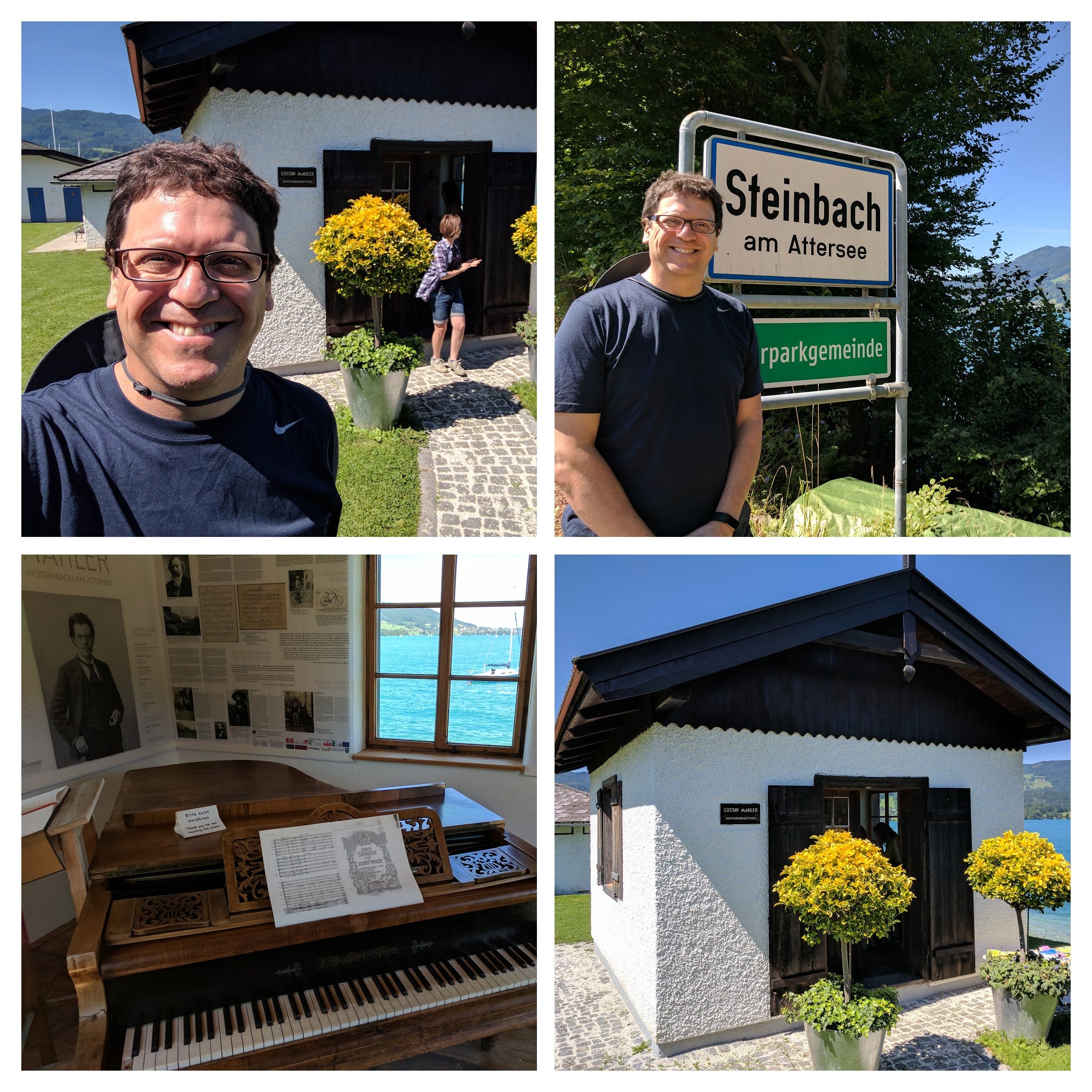
The third symphony was written between 1893–1896, with the bulk of the symphony composed during the summer of 1896 in a little hut behind a hotel in Steinbach, on the beautiful lake, Attersee, in Upper Austria. I have spent a lot of time at or near this lake and here are a few photos of this hut that I took in 2017.

The young composer, who was already known throughout Europe as one of its leading conductors, spent the summer of 1896 composing his third symphony, but also riding his bike to Bad Ischl (28 miles, roundtrip) once a week to spend time with Europe’s greatest living composer, Johannes Brahms. Bad Ischl, at the time, was the most famous spa town in the Austro-Hungarian Empire as it was the summer residence of the Royal Habsburg family. The empire’s hoi-polloi would summer there, as well, including the composers Brahms and Johann Strauss.

Brahms didn’t think much of the young composer’s music, but was nevertheless very supportive of his ambitions to become the General Music Director of the Vienna State Opera, then the ultimate conducting position, which Mahler attained in 1897.

Mahler wrote all of his symphonies during his summer holidays. They were not written on commission and their premieres would often happen quite a bit after they were completed. This was the case with the third symphony, not premiering until June 9,1902, in Krefeld, with Mahler conducting the Orchester des Allgemeines Deutschen Musikvereins. It is his longest symphony, as well as being the longest symphony in the standard repertoire. The first movement, alone, takes around 35 minutes to perform. The symphony has a total of six movements and although Mahler dropped these titles before publication, these original descriptors of each movement are very helpful:
- “Pan Awakes, Summer Marches In”
- “What the Flowers in the Meadow Tell Me”
- “What the Animals in the Forest Tell Me”
- “What Man Tells Me”
- “What the Angels Tell Me”
- “What Love Tells Me”
Mahler often described his symphonies as their own worlds, and they certainly are just that. The third symphony is, indeed, it’s own universe!
Here’s a great documentary about Mahler’s Symphony №3.
Here are some performances you shouldn’t miss:
